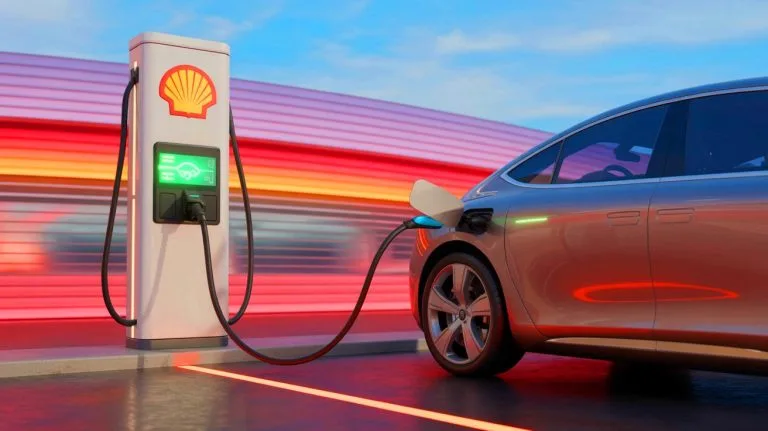| IN A NUTSHELL |
|
Electric vehicles (EVs) have been lauded as a cornerstone of the future of transportation, promising reduced emissions and a shift away from fossil fuels. However, one significant hurdle remains: the time it takes to charge. While advancements have been made, charging still takes considerably longer than refueling a conventional vehicle. Shell, a company traditionally associated with oil and gas, is stepping into this arena with a new innovation. They’ve developed a thermal management fluid that aims to drastically cut charging times. This development could signal a pivotal shift in the EV landscape, offering both challenges and opportunities for the industry.
Shell’s Innovative Thermal Management Fluid
Shell’s latest innovation centers around a thermal management fluid designed specifically for electric vehicles. This fluid is not just any coolant; it’s engineered to reduce thermal stresses significantly. By doing so, it allows for much higher cell charging currents, which translates to faster charging times. The fluid fills all the gaps in a battery pack, maximizing contact with each cell and enabling efficient heat transfer. This is crucial because overheating can damage batteries and reduce their lifespan.
The potential of this fluid was demonstrated in a 34-kWh battery, achieving a 10-minute charge time from 10% to 80%. While this battery is smaller than the 84-kWh packs found in some long-range vehicles, the implications are noteworthy. If this technology can be scaled and adapted to larger batteries, it could revolutionize how quickly EVs can be charged.
Comparisons to Current Market Standards
Shell’s thermal management fluid is entering an already competitive market. Chinese battery manufacturer CATL has been a leader in fast-charging technology. Their Shenxing Gen 2 battery can add 1.5 miles of range per second of charge. However, this requires the fastest chargers available and still takes 20 minutes to go from 0% to 100% for a 500-mile range battery.
CATL’s Shenxing Pro Super-Fast Charging LFP battery also offers impressive performance. It provides 0.5 miles per second of charge and includes safety features to prevent overheating. These batteries promise high performance even at sub-zero temperatures and come with a 150,000-mile warranty.
While Shell’s fluid is promising, it is yet to be integrated into commercially available EVs. The technology has only been tested in a standalone battery pack. The true test will be its performance in real-world conditions with actual vehicles.
The Implications for Automakers and Consumers
If Shell’s fluid proves successful in large-scale applications, it could be a game-changer for automakers. Faster charging times would make EVs more appealing to consumers, potentially accelerating the shift away from gasoline-powered vehicles. Automakers who adopt this technology could gain a competitive edge in the market.
For consumers, the benefits are clear. Faster charging means less time waiting and more time driving. This could alleviate one of the primary concerns about EVs: the inconvenience of long charging times. Additionally, if the technology is adopted widely, it could lead to a more uniform and efficient charging infrastructure.
Challenges and the Road Ahead
Despite its potential, Shell’s innovation faces several challenges. Integration into existing EV models will require collaboration with automakers and could involve significant redesigns of current battery systems. Safety is another concern. While the fluid reduces thermal stress, ensuring it does not introduce new risks is critical.
Cost is also a factor. Any new technology typically comes at a premium, and it’s unclear how this fluid will impact the overall cost of EVs. For widespread adoption, it must be affordable for both manufacturers and consumers.
Looking forward, the success of this technology will depend on how effectively these challenges are addressed. Collaboration between Shell, automakers, and other stakeholders will be crucial in bringing this innovation to market.
As Shell ventures into the EV space with this thermal management fluid, the potential for faster charging times is exciting. However, the path to market adoption is fraught with challenges. Will this innovation lead to a new era of rapid EV charging, or will it face insurmountable obstacles? The coming years will provide answers as the industry continues to evolve and adapt.
Did you like it? 4.5/5 (26)






